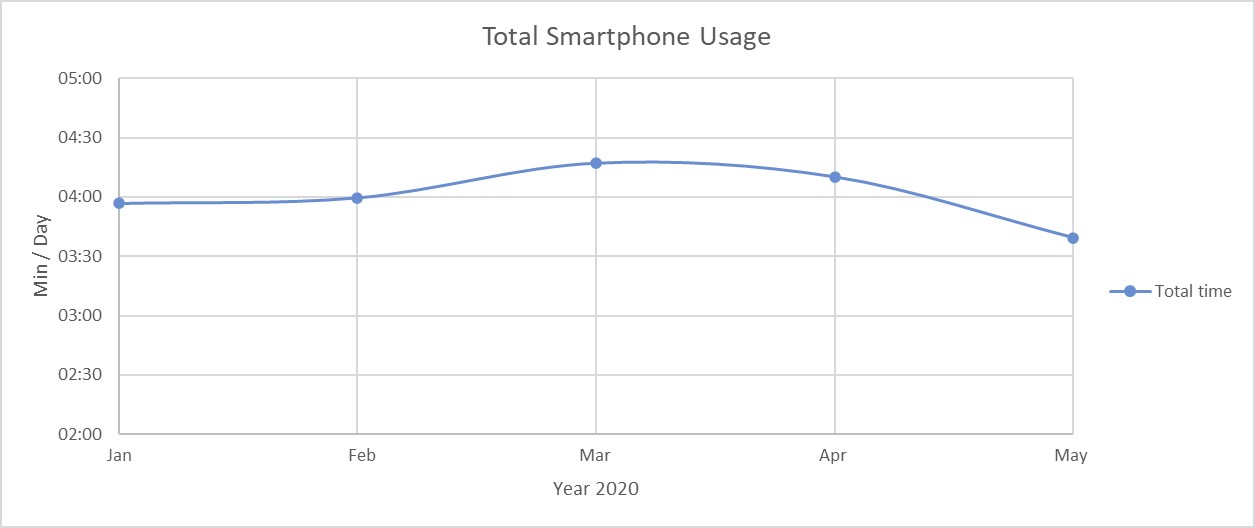Smartphone behavior during the Corona pandemic - Real app usage data from Germany.
By Murmuras on Aug 13, 2020
To get a better understanding of how the corona pandemic has impacted people’s lives during lockdown, we looked at smartphone behavior. Here, we describe how real-time app usage of 755 study participants from Germany has changed. We found several interesting trends when looking at the collected data since January 2020.
First, the three most-used apps WhatsApp, Instagram, and YouTube show two opposite trends. On the one hand, WhatsApp and Instagram were used considerably more in March and April compared to the months before and after. While participants spent an average of 31 minutes per day on WhatsApp in February, the usage was over 20% higher in March (39 minutes) and April (38 minutes), dropping to 33 minutes in May.
On the other hand, the video streaming app YouTube was used for 18% less per day during the beginning of lockdown in Germany in March (23 minutes), but returned earlier than the other two to before-lockdown levels.

During these months, COVID-19 was rapidly spreading in Germany, and the number of new confirmed cases per day peaked end of March. The period was also marked by strict lockdown and social distancing measures. Being unable to meet with people in person, connecting virtually through social media and digital messengers may have acted as a means of coping with the isolation. The trends observed for WhatsApp, Instagram, and YouTube seem to generalize to the app categories in which they fall into. There was a remarkable rise in mean daily app usage of social apps (e.g., Instagram, Facebook, Jodel) and communication apps (e.g., WhatsApp, Calling, Telegram) in March (>20%) and April 2020 (>15%) compared to February 2020. In March participants spent 2 hours and 13 minutes as a daily average on social or communication apps. Video & Entertain apps like Netflix, Prime Video or YouTube, on the other hand, have fallen by 18% (from 40 to 33 minutes per day) on average in March.

Another interesting finding is that people’s app behavior can give implications about their daily activities. When looking at the mean daily usage duration of Google Maps during the first months of 2020, the impact of the lockdown is visible. There is a drop in time spent using the app. People stayed more at home and, thus, did not need to check for directions as frequently. While this may not be surprising, it shows how measuring app behavior gives insights into people’s activities not directly related to app usage, such as mobility.

Looking at how much time people spent on their phone overall, we observe a slight increase in March and April 2020. Participants used their phones for approximately 4 hours and 17 minutes in March, and thus, 15 minutes more than in February. In May total smartphone usage decreased below before-lockdown levels. The change in seasons may explain this trend. With the rising temperatures, people may have taken every opportunity to enjoy the sun outdoors once regulations were relaxed. Especially after the uncertainty and isolation of the time at home, people may have longed for a positive change!

Do you want to know more details about our findings? Are you interested in conducting your own smartphone study with our technology? As a spin-off from the University of Bonn, we offer researchers solutions to run smartphone-based studies with our app & platform, in order to better understand human behavior with objective data. We follow the strict European GDPR laws and process the data for study purposes only. Data is stored and processed on secure servers in Germany. Get in touch!